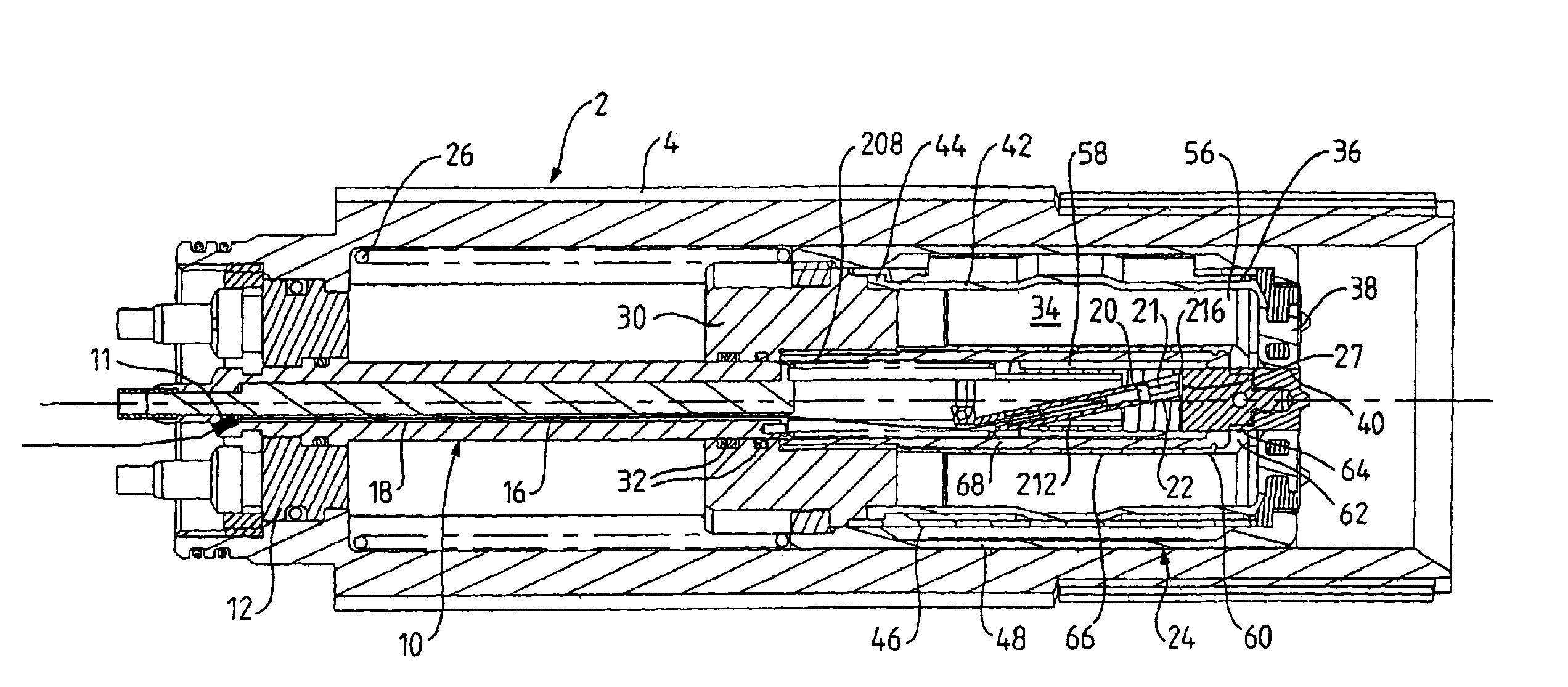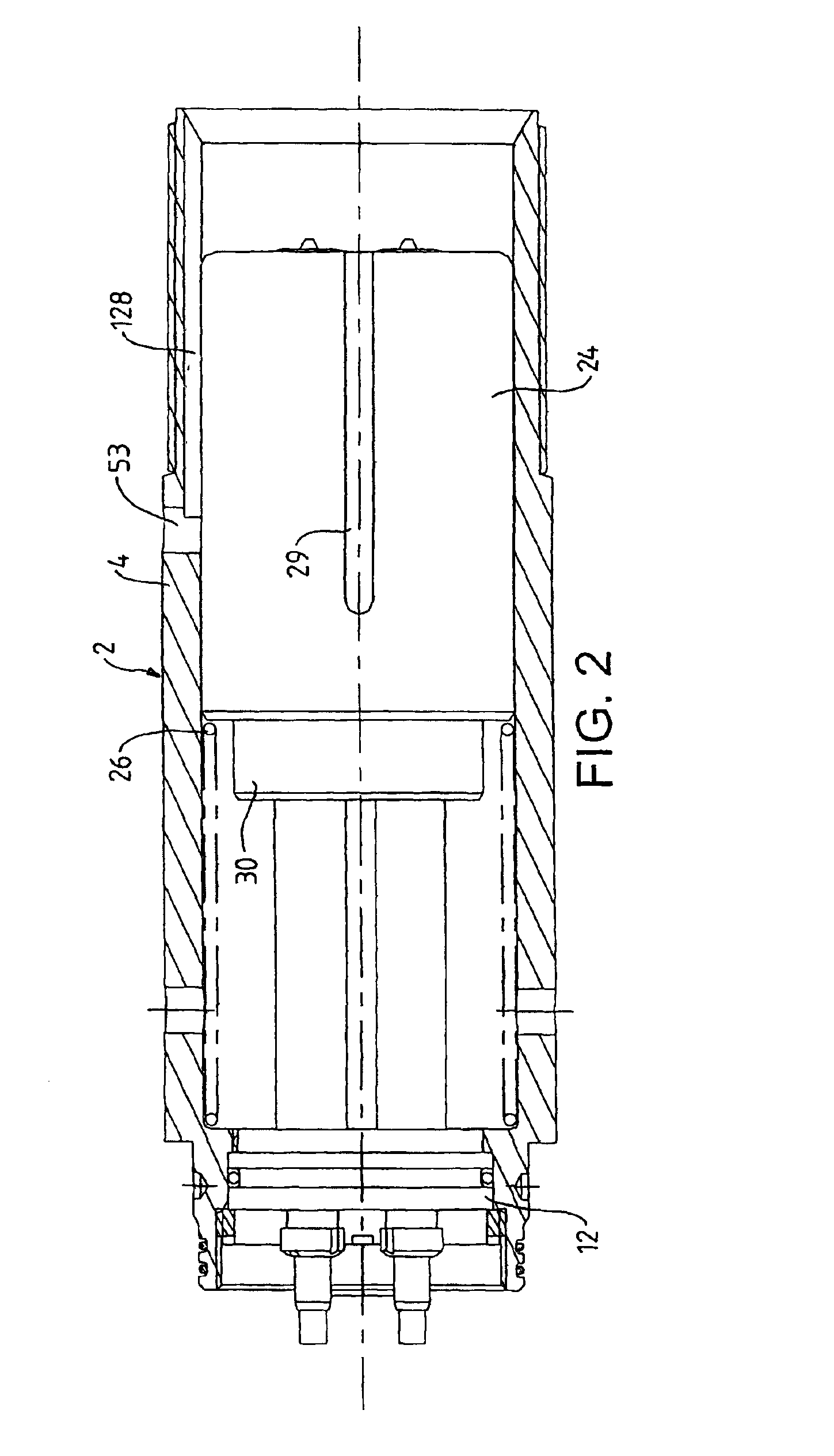Connector for making an optical connection underwater
- Summary
- Abstract
- Description
- Claims
- Application Information
AI Technical Summary
Benefits of technology
Problems solved by technology
Method used
Image
Examples
Embodiment Construction
[0064]The embodiment shown in FIGS. 1 to 14 will now be described. FIGS. 1 to 3 show a first connector part 2 having a receptacle 4 for receiving a plug 6 of a second connector part 8, shown in FIGS. 7 to 9. An axially arranged probe 10 projects forwardly from a rear support 12. An optical fibre 16 extends into the probe 10 via a rear opening 11 plugged by an epoxy water block and along a passage 18 in the probe to an optical contact 20 housed in a slanted passage 22 of the probe. At the front end of the optical contact 20, an optical pin 21 is provided. A front opening 27 is provided at the forward end of the slanted passage 22, where a seal 216 is also provided.
[0065]The construction of the probe 10 is best seen in FIGS. 4 to 6 and 15. At its forward end the probe has a nose portion 200. Behind it an electrical probe contact portion 202 is provided. The probe contact portion 202 is supported at the front end of a pair of axially extending conductive arms 204 which extend inside a ...
PUM
 Login to View More
Login to View More Abstract
Description
Claims
Application Information
 Login to View More
Login to View More - R&D
- Intellectual Property
- Life Sciences
- Materials
- Tech Scout
- Unparalleled Data Quality
- Higher Quality Content
- 60% Fewer Hallucinations
Browse by: Latest US Patents, China's latest patents, Technical Efficacy Thesaurus, Application Domain, Technology Topic, Popular Technical Reports.
© 2025 PatSnap. All rights reserved.Legal|Privacy policy|Modern Slavery Act Transparency Statement|Sitemap|About US| Contact US: help@patsnap.com



